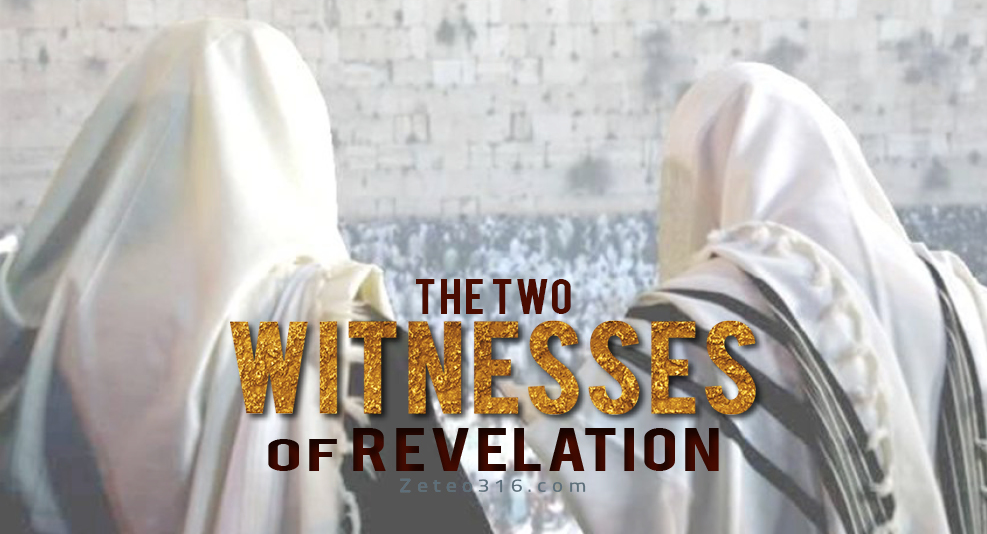
The Two Witnesses of Revelation have been the subject of a lot of prophetic speculation. Who are they, or what are they? When do they appear? Is it during the last three-and-a-half years before Christ returns, or before? And what do they do?
Right from the beginning I want to say that I don’t have definitive answers to most of these questions. As for what these witnesses are – I framed the question this way for a good reason. Some interpreters do not see them as actual men; they symbolize them into church entities.
A classic example of this interpretation method is found in Brian Tabb’s book “All Things New – Revelation as canonical capstone.” Tabb suggests that the “two lampstands” in Rev 11:4 may be identified with the faithful churches of Smyrna and Philadelphia. He seems to draw ideas from the likes of G. K. Beale and Richard Bauckham.
The witnesses prophesy for forty-two months. But the literal interpretation of this period wouldn’t match the literal time stamp of these two churches. So Tabb is forced to treat the forty-two months as symbolic. His appeal to Daniel 7:25; 12:7 also means he must morph national Israel (the context of these passages) into the church (New Spiritual Israel).
Another example of Jewish identity replacement is the assertion that the 144,000 from the tribes of Israel in Revelation 7 is symbolic in number and identity. Everyone agrees that Revelation contains symbolism. The multi-headed dragon is obviously symbolic. However, this fact is too often used as license to allegorize or symbolize anything which doesn’t fit into a church structure or held supposition.
Using Tabb’s eclectic interpretation approach to interpreting Revelation, one can symbolize practically anything. You begin with a premise (Replacement Theology in its various forms) and then find ways to make anything you want fit your scheme, rather than allowing the passages to speak.
For some responses, see Tony Garland’s Revelation Commentary articles on Interpreting Symbols and Systems of Interpretation. I think it’s best to see the Two Witnesses as real men, as John clearly portrays them to be.
Who are the Two Witnesses? Are they Moses, Enoch, Elijah, or someone else?
I don’t think this is something which can be answered definitively, or to be dogmatic about. John simply doesn’t inform us. And since much has already been written on the matter, I’ll refer you once again to Tony Garland’s Revelation Commentary. Tony also discusses the Symbolic, Corporate and Literal views of these two men. Read it HERE.
When do the Two Witnesses prophesy?
Again, there are differences of opinion. Most of the premil-pretrib futuristic commentaries I own place them in the first half of Daniel’s 70th Week. However, two notable exceptions are Robert L. Thomas and John MacArthur, who place them in the second half of the Week.
Over the years I’ve read suggestions that their ministry could begin some time after the beginning of the 70th Week of Daniel. This would make their ministry overlap the midweek point and end prior to the end of the Week. Yet I’ve never seen any compelling justification for this particular position.
Perhaps the best detailed arguments for placing the Two Witnesses in the first half of the Week comes from John Whitcomb. I find his timing arguments rather compelling. For example he notes:
…putting the two witnesses into the last half of the Week compromises the totality of Antichrist’s dominion during that same period. How can he bring fire from heaven upon his enemies (through the False Prophet, Rev. 13:13) if the two witnesses are simultaneously bringing fire from heaven upon their enemies (Rev. 11:5)? We are clearly dealing with two different time periods: the first half of the Week with the overwhelming power of the two witnesses, and the last half of the Week with the overwhelming power of the Beast and the False Prophet. When the world asks the rhetorical question, “Who is able to make war with [the Beast]?” (Rev. 13:4), it seems obvious that no one can answer, “The two witnesses are able to make war with him,” for their 1,260 days of ministry will have ended, and they will be gone. (Emphasis mine)
Regardless of when these Two Witnesses appear in relation to the 70th Week, it’s apparent to me that their ministry also involves being instruments of God’s wrath. God uses various means to administer His wrath. If I’m correct, it means God’s wrath – as administered by the Witnesses – occurs through the first half of the Week, or the entire length of the second half (not just a portion of it).
Of these Witnesses Robert Thomas notes that: “Their power to accomplish their mission is phenomenal” (Revelation 8-22 p 90). Even so, they cannot operate except by God’s permission and empowerment.
Fire proceeds from their mouths; they stop rain; turn water into blood and strike the earth with plagues (Rev 11:5-6). The scope of their ministry is so broad and effective that “the peoples, tribes, tongues and nations who dwell on the earth” celebrate their deaths because of the torment inflicted upon them by these prophets (Rev 11:9-10). Fire, plague and water into blood hearken back to Old Testament examples of God’s wrath. Note the plagues of Egypt.
There’s a precious promise to the faithful church in Rev 3:10. Some folk want to add between-the-line clauses. For instance, they assert the promise of exemption doesn’t apply to Antichrist’s Great Tribulation etc. They’re bringing their assumptions to the text.
It isn’t really isn’t Antichrist’s Tribulation at all. The entire last week is saturated with God’s wrath sovereignly administered by a variety of means. Part of the work of the Two Witnesses is yet another component of God’s wrath.
I take comfort that Jesus Christ can come for His church at any time, as did the early church. This truth ought to make us look up every day in hope, and to keep busy.
Maranatha!
The Rapture According to Jesus
